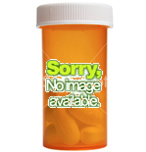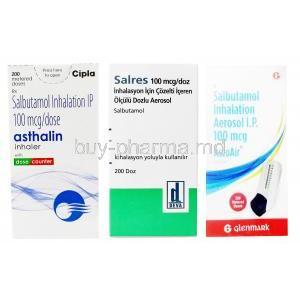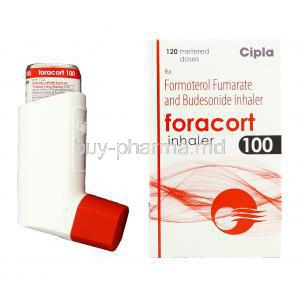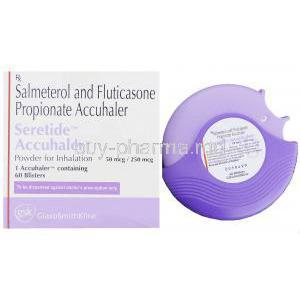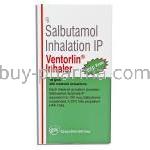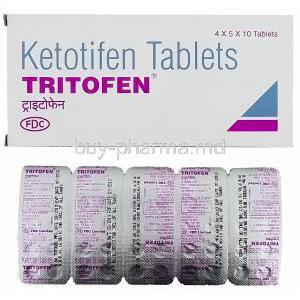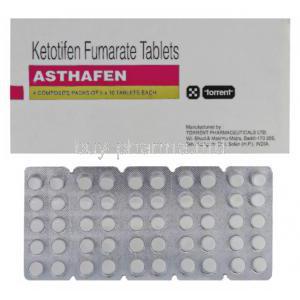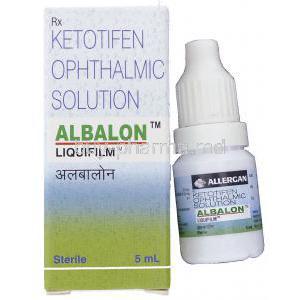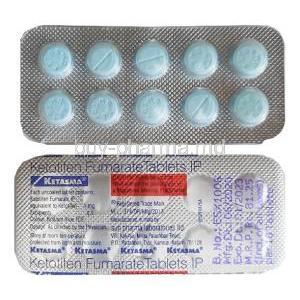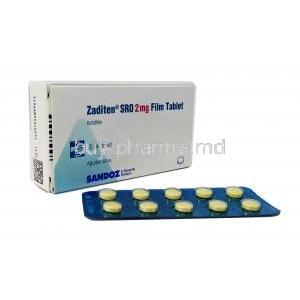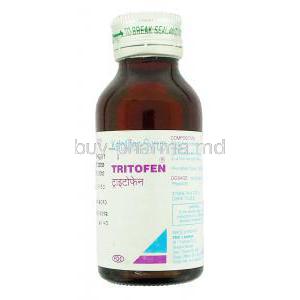1. Introduction to the AeroDawg Canine Aerosol Chamber
What is the AeroDawg Inhaler Spacer?
The AeroDawg Canine Aerosol Chamber is a specially engineered inhalation device designed for dogs who require aerosolized medications. It functions as a spacer that delivers inhaled therapies directly to a dog’s lungs using a metered dose inhaler (MDI). This non-invasive tool allows for targeted, effective management of chronic and acute respiratory issues.
Overview of Aerosol Therapy in Dogs
Aerosol therapy is an increasingly popular and effective approach in veterinary medicine, particularly for treating respiratory ailments. Inhaled medications deliver therapeutic agents directly into the lungs, bypassing systemic circulation and minimizing adverse effects. The technique mirrors human asthma therapy and is now adapted for canine anatomy and behavior.
Role in Treating Respiratory Conditions in Canines
The AeroDawg chamber enables efficient administration of bronchodilators and corticosteroids for dogs suffering from airway inflammation or obstruction. By optimizing lung deposition and ensuring consistent delivery, the device plays a critical role in managing conditions such as asthma-like syndromes, bronchitis, and tracheal collapse.
Comparison with Other Canine Inhalation Devices
Unlike nebulizers that require extended treatment sessions and complex setup, the AeroDawg chamber offers quick, stress-minimized administration. Its anti-static chamber and unidirectional valve system outperform improvised or generic spacers, ensuring reproducibility and higher treatment compliance among canine patients.
2. How the AeroDawg Chamber Works
Mechanism of Action: Spacer and Inhalation Valve System
The AeroDawg functions by holding aerosolized medication within its anti-static chamber, allowing dogs to inhale the mist at their own pace. A one-way valve ensures that the drug is only released during inhalation, reducing waste and improving therapeutic efficacy.
Delivery of Metered Dose Inhalers (MDIs) to Dogs
Metered dose inhalers are attached to the rear port of the chamber. With each activation, the prescribed medication is released into the chamber, ready to be inhaled through the mask. This direct delivery to the respiratory tract ensures optimal dosing and minimal systemic absorption.
Enhanced Drug Absorption through Deep Lung Delivery
The design encourages deep, steady breaths, facilitating drug deposition into the lower airways. This approach enhances bronchodilation, reduces airway inflammation, and supports faster clinical improvement.
Compatibility with Veterinary Prescribed Inhalers
The AeroDawg is compatible with most standard MDIs prescribed in veterinary settings, including fluticasone, salbutamol, and other corticosteroids or bronchodilators. This flexibility supports individualized therapy based on specific respiratory diagnoses.
3. Approved Veterinary Uses of the AeroDawg Canine Aerosol Chamber
Treatment of Chronic Bronchitis in Dogs
Veterinarians frequently prescribe AeroDawg for chronic bronchitis, characterized by long-term cough, airway inflammation, and mucus overproduction. The chamber allows regular corticosteroid inhalation to reduce inflammation and improve quality of life.
Management of Canine Asthma and Allergic Airway Disease
In dogs diagnosed with asthma-like symptoms or allergic airway diseases, the chamber enables accurate delivery of bronchodilators and anti-inflammatory agents to ease breathing and reduce hypersensitivity.
Use in Dogs with Tracheal Collapse
AeroDawg is often used to administer medication in dogs with tracheal collapse, especially toy breeds. It aids in relieving respiratory distress by reducing tracheal inflammation and promoting airway dilation.
Supportive Therapy for Recurrent Airway Obstruction (RAO)
Though more common in equine medicine, RAO-like conditions in dogs can benefit from AeroDawg-assisted therapy to alleviate mucus plugging and enhance air passage efficiency.
4. Off-Label and Investigational Uses in Canine Practice
Use in Brachycephalic Airway Syndrome
Veterinarians may employ AeroDawg as an adjunct therapy in brachycephalic breeds prone to airway obstruction. While not officially approved for this use, it can improve breathing by reducing secondary inflammation.
Experimental Use in Pulmonary Hypertension
Though data is limited, AeroDawg has been explored in investigational studies targeting pulmonary hypertension, where targeted drug delivery may mitigate vascular remodeling.
Palliative Use in Terminal Pulmonary Disorders
For dogs with end-stage lung disease, the AeroDawg can offer palliative relief by delivering medications that reduce respiratory effort and improve comfort.
Emergency Relief for Exercise-Induced Respiratory Distress
In select cases, the chamber may be used for rapid delivery of bronchodilators during exercise-induced respiratory crises, especially in working or athletic dogs.
5. Dosage and Administration Guidelines
Step-by-Step Instructions for Use with MDI Inhalers
- Shake the MDI well before use - Insert the MDI into the chamber’s back port - Place the mask gently over the dog's muzzle ensuring a snug fit - Press the inhaler to release medication into the chamber - Allow the dog to inhale 7–10 breaths
Recommended Frequency of Administration
Dosing frequency varies by medication and condition but typically ranges from once to twice daily. Veterinary instructions must be followed precisely.
Duration of Treatment Courses Based on Diagnosis
- Chronic bronchitis: Lifelong treatment - Asthma: Maintenance and rescue therapy - Tracheal collapse: Cyclical or as-needed use
Veterinary Monitoring and Adjustment of Dose
Periodic re-evaluation is necessary to assess response, adjust doses, and prevent complications. Monitoring may include chest radiographs, clinical scoring, and pulmonary auscultation.
6. Composition and Design of the AeroDawg Device
Anti-Static Chamber Construction
The chamber is built from durable, anti-static polymers that prevent medication particles from clinging to the walls, enhancing drug delivery efficiency.
One-Way Flow Valve Mechanism
This valve opens only during inhalation, ensuring precise timing of medication flow. It prevents exhaled air from re-entering the chamber.
Soft Silicone Mask for Canine Muzzle Fit
Available in multiple sizes, the mask is made of soft, hypoallergenic silicone that molds to the dog’s snout, reducing discomfort and ensuring compliance.
Sizing Options and Replacement Parts
Two sizes are available: small for dogs under 20 lbs and large for dogs over 20 lbs. Masks and valves are replaceable to maintain hygiene and functionality.
7. Common and Potential Side Effects of Inhalation Therapy Using AeroDawg
Mild Behavioral Discomfort or Mask Aversion
Some dogs may initially resist the mask. Gradual desensitization training often resolves this issue.
Sneezing or Coughing After Administration
Transient coughing or sneezing can occur post-treatment but usually subsides without intervention.
Temporary Dryness of Nasal or Oral Passages
Inhaled medications may cause localized dryness, leading to increased thirst or nasal irritation.
Irritation Due to Improper Use of Inhaled Medications
Incorrect MDI dosage or poor mask application can result in suboptimal effects and localized discomfort.
8. Serious Side Effects and Complications
Bronchospasm or Worsening Respiratory Symptoms
In rare cases, inhalation may trigger bronchospasm, requiring immediate veterinary intervention.
Hypersensitivity Reactions to Inhaled Drugs
Though infrequent, allergic reactions may manifest as swelling, respiratory distress, or dermatological symptoms.
Long-Term Effects of Steroid Inhalers in Dogs
Chronic use of corticosteroids can lead to iatrogenic Cushing’s disease, muscle wasting, or immunosuppression.
Gastrointestinal Symptoms from Inhaled Medication Swallowing
If the medication is swallowed rather than inhaled, it may cause nausea, vomiting, or diarrhea.
9. Warnings and Precautions Before Using AeroDawg
Proper Mask Fit and Breathing Synchronization
Correct sizing and placement are essential. Loose fitting masks reduce medication delivery and therapeutic efficacy.
Veterinary Consultation Before First Use
All canine inhalation therapy should be initiated under veterinary supervision with an accurate diagnosis and drug prescription.
Avoiding Use in Dogs with Nasal or Facial Injuries
Use is contraindicated in dogs with open wounds, recent surgery, or deformities affecting the nasal passages or snout.
Device Cleaning to Prevent Contamination or Infection
Regular cleaning with mild soap and warm water is crucial. The chamber and mask should be allowed to air-dry completely before reuse.
10. Contraindications for AeroDawg Chamber Use
Dogs Unable to Tolerate Mask Placement
The AeroDawg chamber is not suitable for dogs that exhibit severe anxiety or aggression when the mask is placed over the muzzle. These dogs may experience heightened stress, which can compromise both safety and treatment efficacy. Behavioral desensitization may be attempted, but in refractory cases, alternative therapies should be considered.
History of Severe Hypersensitivity to Propellants or Carriers
Dogs with known allergies or hypersensitivity reactions to components within metered dose inhalers (e.g., hydrofluoroalkane propellants) should not use the AeroDawg device. Exposure may result in anaphylaxis or acute respiratory compromise, necessitating immediate medical attention.
Active Nasal Bleeding or Airway Trauma
Use of the AeroDawg chamber is contraindicated in dogs presenting with active epistaxis (nosebleeds), recent nasal surgery, or trauma to the upper airway. The pressure from the mask and inhalation process may exacerbate these conditions or introduce infection.
Dogs with Severe Cognitive or Neurological Impairments
Canines suffering from advanced cognitive dysfunction, seizures, or neuromuscular disorders may not be suitable candidates for AeroDawg therapy. Impaired respiratory control or inability to coordinate breathing may limit therapeutic success and increase the risk of aspiration or respiratory distress.
11. Careful Administration in Special Canine Populations
Use in Elderly Dogs with Decreased Respiratory Capacity
Geriatric dogs often present with diminished lung function, reduced inspiratory force, and comorbidities. While AeroDawg therapy can be beneficial, extra caution must be exercised:
- Lower inhaler dosage or spacing treatments further apart
- Enhanced monitoring for lethargy or worsening respiratory effort
- Routine check-ups for treatment reassessment
Use in Pregnant or Lactating Dogs: Risk Assessment
There is limited data on the safety of inhaled medications during pregnancy and lactation in canines. Theoretical risk to developing fetuses or nursing puppies exists depending on the medication used. Veterinary risk-benefit assessment is essential before initiating therapy.
Pediatric Veterinary Use: Puppies and Small Breeds
Small breed dogs and puppies have unique anatomical challenges including narrower airways and smaller tidal volumes. Use of AeroDawg in these populations requires:
- Properly sized masks for secure fit
- Close observation for respiratory fatigue
- Lower dosing regimens to reduce systemic effects
Monitoring Dogs with Comorbid Cardiac Conditions
Dogs with heart disease, particularly congestive heart failure or arrhythmias, may require tailored inhalation therapy. Certain bronchodilators can induce tachycardia or increase myocardial oxygen demand, necessitating:
- Cardiac evaluation before starting therapy
- Continuous monitoring for new or worsening cardiac symptoms
- Adjustment of medication or delivery timing
12. Drug Interactions and Compatibility
Interaction with Systemic Corticosteroids
Concurrent use of inhaled and systemic corticosteroids may increase the risk of additive adverse effects such as immunosuppression or hormonal imbalance. Dosing regimens should be reviewed to avoid unnecessary overlap and minimize complications.
Concurrent Use with Oral Bronchodilators
Inhaled and oral bronchodilators may potentiate each other’s effects, leading to tremors, elevated heart rate, or anxiety. Careful titration and veterinary oversight are recommended when using both forms simultaneously.
Effects of Antihistamines on Inhalation Efficiency
Sedating antihistamines can affect a dog’s respiratory rate and depth of breathing, potentially altering the pharmacokinetics of inhaled medications. Administer antihistamines at times that do not coincide with inhalation therapy, or consider non-sedating alternatives.
Potential for Synergistic or Antagonistic Drug Effects
- Synergistic: Combining inhaled corticosteroids with leukotriene inhibitors may enhance anti-inflammatory response - Antagonistic: The use of mucolytics may interfere with proper drug deposition if the airway is excessively moist Always review the entire medication profile before adding AeroDawg-based therapy.
13. Overdose and Improper Usage of Inhaled Medications via AeroDawg
Signs of Inhaled Corticosteroid Overuse
Overuse of corticosteroid inhalers can result in systemic absorption leading to:
- Polyuria and polydipsia
- Increased appetite and weight gain
- Panting and behavioral changes
Persistent symptoms warrant immediate cessation and clinical evaluation.
Emergency Management of Overdose
In case of suspected overdose:
- Discontinue the medication immediately
- Initiate supportive care, including IV fluids and anti-inflammatory therapy if needed
- Contact a veterinary toxicologist for guidance
Preventing Inadvertent Multiple Doses
Owners should:
- Track doses with a logbook or smartphone app
- Ensure all household members are informed of dosing schedules
- Use inhalers with built-in dose counters when available
Monitoring for Iatrogenic Cushing’s Syndrome
Prolonged corticosteroid use may lead to iatrogenic hyperadrenocorticism. Early signs include thinning fur, pot-bellied appearance, and skin infections. Regular veterinary visits and endocrine panels are essential to detect and manage this complication.
14. Storage and Maintenance of the AeroDawg Device
Recommended Cleaning Schedule and Methods
Cleaning should be performed weekly or more frequently if the device is used daily:
- Disassemble the mask, chamber, and valve
- Wash with warm, soapy water (fragrance-free)
- Rinse thoroughly and air dry on a clean towel
Storage Conditions to Preserve Anti-Static Properties
Store the AeroDawg in a dry, dust-free environment. Avoid placing it near sources of heat, direct sunlight, or humidity, which may degrade materials and reduce effectiveness.
Shelf Life and Replacement Guidelines
- Chamber: Replace every 12 months or earlier if damaged - Mask: Replace every 6 months or when showing wear - Valve: Replace every 3 months to maintain responsiveness
Avoidance of Heat, Moisture, and Contaminants
Do not boil, microwave, or use abrasive agents to clean the AeroDawg components. These can compromise the anti-static layer and valve integrity.
15. Handling Precautions for Safe and Effective Use
Ensuring a Calm Environment for Application
Stress-free application is crucial for successful therapy. Use a quiet room, avoid distractions, and maintain a relaxed demeanor to reduce resistance and ensure cooperation.
Training Dogs to Accept Mask Application
Gradual desensitization is key:
- Introduce the mask without turning on the inhaler
- Reward calm behavior with treats
- Increase exposure time over several days
Personal Safety Precautions During Use
Owners should avoid directing the inhaler mist toward their own face. Wash hands before and after administration, especially if corticosteroids are used, to avoid inadvertent skin exposure.
Avoiding Shared Use Between Dogs
Each dog should have its own dedicated chamber and mask. Sharing increases the risk of cross-infection, allergic reaction, or improper fit, compromising therapeutic outcomes.

